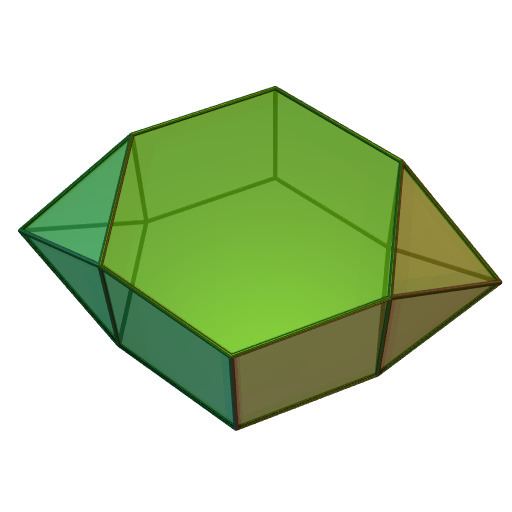Edges 26 Vertex configuration 4(4.6)2(3)8(3.4.6) | Vertices 14 Symmetry group D2h | |
 | ||
Type JohnsonJ54 - J55 - J56 Faces 2x4 triangles4 squares2 hexagons | ||
In geometry, the parabiaugmented hexagonal prism is one of the Johnson solids (J55). As the name suggests, it can be constructed by doubly augmenting a hexagonal prism by attaching square pyramids (J1) to two of its nonadjacent, parallel (opposite) equatorial faces. Attaching the pyramids to nonadjacent, nonparallel equatorial faces yields a metabiaugmented hexagonal prism. (The solid obtained by attaching pyramids to adjacent equatorial faces is not convex, and thus not a Johnson solid.)
A Johnson solid is one of 92 strictly convex polyhedra that have regular faces but are not uniform (that is, they are not Platonic solids, Archimedean solids, prisms or antiprisms). They were named by Norman Johnson, who first listed these polyhedra in 1966.
